If you’re using an espresso coffee machine, you need a coffee tamper. You’ll understand this, but what you might not understand is just how much impact the best coffee tampers can have on the quality of espresso coffee you’ll produce at home.
If you weren’t aware, tamping is what you need to do with the coffee in the basket before inserting it into your espresso machine.
You apply pressure to the ground coffee beans in the basket, in the portafilter, to compress it prior to inserting the portafilter into the group and pulling the shot.
Portafilter just indicates filter holder, by the way – and if you’re asking “well why don’t you refer to it as a filter holder?” the answer to that is that calling it a portafilter makes me feel more clever ;-).
This tamping is done with a tamper, funnily enough ;-), a small hand-held device with a round flat surface that matches the size of your portafilter, and a deal with (usually, although there are flat, handle-free tampers too) often crafted of wood, for you to grip in order to tamp.
Tamping is a key part of the espresso-making technique, and the “tampers” with which most domestic espresso coffee machines are shipped are a joke! Well, they’re not tampers at all.
If you’re buying an entry-level espresso coffee machine, especially if it’s in the £100-£200 price range, it won’t come with a tamper, even though the marketing blurb will probably say that it does.
What these types of espresso coffee machines usually come with, is a plastic thing with a scoop at one end and a flat circular plastic thing at the other end, which is supposed to be a tamper.
These devices, in my modest opinion, belong in the same category as chocolate tea pots & bikes for fish: utterly useless.
Even though speaking of bikes for fish, have you ever seen a Gurnard?
Extremely strange looking sea-dwelling critter which is allegedly a fish, though I’ve often wondered if they’re extremely lobsters in disguise, and which I suspect are possibly capable of bike riding.
They have wings, too, wings I tell you! Isn’t nature incredible?


Anyway, getting back on subject: If you’re utilizing something like this (a plastic scoop tamper I mean, not a bike-riding fish) you’ll rather likely find that using a proper tamper will up your espresso coffee game.
There are two main reasons for this:
Degree Tamping. If you don’t get a extent surface when you tamp, you’re more likely to suffer from channeling, where the water finds paths of lesser resistance in the coffee, leading to uneven extraction, and poor tasting espresso.
What you’ll find is that you actually can’t get a proper grip on these plastic scoop tamper things, which doesn’t make them at all conducive to a level tamp.
Consistent tamping pressure. There are a number of variables to espresso-making, among which is tamping pressure. If you don’t tamp at a fairly consistent pressure from one shot to the next, your shot consistency is likely to be “all over the shop”.
Among the main secrets to excellent espresso coffee is consistency. You need to do the same thing each time, and when you’re changing things in order to enhance the shot quality, you only want to change one thing at a time.
If you’re constantly changing tamping pressure (due to the truth that you’re utilizing a daft plastic scoopy tamper thing, or a fish, which would probably work just as well) you’ll never fully appreciate the impact of the changes you’re making.
For example, you might make the grind mildly finer due to the reality that your shot is flowing too quickly, but then you tamp with less pressure than you did before, and not much changes with the flow rate.
To be fair, there is a knack to tamping even with proper tampers, switching to a decent tamper isn’t going to entirely resolve tamping inconsistency, nevertheless it’ll certainly help in my modest opinion.
Not only will it help, but I believe that improving your tamper and therefore your tamping, is one of the low-hanging fruit where espresso coffee creating is anxious.
By low-hanging fruit, I’m talking about the perfect return with the least amount of investment.
Numerous people get something spoken about as upgradeitis quite early on in the home barista journey and spend large amounts of money on seemingly more important bits of kit, namely on upgrading their espresso machine.
If only they knew that there are really a number of key areas to improve, which can be improved with much less effort & investment than buying a more expensive espresso machine.
One of which is the humble and inexpensive action of improving their tamper and some of the others are evenly as easy and similar in terms of cost!
So I’m going introduce you to what I believe to be some of the best coffee tampers now – but once you’ve chosen the best tamper for you & for your espresso machine, stick around so I can talk you through some of the others.
The Best Coffee Tampers
I’m going to split this into various tamper sizes because unfortunately, this isn’t a one size fits all thing. You need a tamper that fits your portafilter, and different espresso coffee machines have different portafilter sizes.
So, below, you’ll find tampers categorized by the espresso machines they’ll fit. If your machine isn’t listed, just check the size of your portafilter, and you’ll then see which tampers you need to be looking at.
Please note, I’m putting each espresso machine into the appropriate category based on what I believe the tamper size to be.
I’d recommend you measure the size of your portafilter, and/or the useless tamper part of your plastic scoop, extremely in case I’m acting on incorrect or out-of-date information.
If you think I’ve got any of the machines below, in the wrong category, please do let me understand, ta.
The Best 49mm Tampers
Compatible with:
Swan Retro Pump Espresso Machine
Amazon Basics Espresso coffee Machine (all variants)
La Pavoni Europiccola (Pre-millennium only. For models from 2000 onwards you’ll need 51mm)
![]()
Check Price - Amazon UK
My Observations
There’s not a excellent deal to be said about this tamper actually – it’s really much a tried and tested tamper combination this, a thick stainless steel flat base with a wooden deal with. There are loads of really similar looking tampers.
I suspect a lot of them are, erm… “emulations” of the popular (and pricier) Motta tampers. Motta being a popular brand, needless to say there are lots of spookily similar tampers available online, often very inexpensive as is the case with this one.
The deal with is Rosewood, the metal part is stainless steel, and it weighs 280g.
![]()
This is apparently a calibrated tamper. Calibrated to what, I can’t tell you – as the blurb doesn’t give this away – however I suspect that this is among the calibrated tampers which isn’t literally calibrated.
Simply, if you press it until it stops, there’s a stiff spring which is designed to help your temp to be more consistent, but whether we can basically call this calibrated – uncertain, nevertheless they do.
If you’re looking for one that clicks at the calibrated pressure so you understand exactly when you’ve hit that pressure, this isn’t that.
I’m unsure if there are any fully calibrated tampers like this at 49mm, but if I’m wrong and there are, let me discover and I’ll include it here.
What else can I tell you about this tamper? It has a stainless steel base, and it weighs 320g, so rather heavy weight.
By the way, reading through the Amazon reviews for this and other tampers, I’m finding myself getting quite annoyed at the noun “tamper” being used as a verb. What’s wrong with me? I must need more coffee, or less.
However, I’ll take a deep breath, and extremely calmly state that “tamper” is the noun, the thing that you tamp with.
The action of tamping is a verb – you tamp coffee, you don’t tamper coffee – in the same way that you use a shaver to shave a beard, nevertheless you don’t shaver a beard, or maybe you do? ;-).
![]()
Check Price - Amazon UK
My Observations
This is another rosewood handle and stainless steel base pair, but a slightly different shape than usual, both the base and the deal with. I’ve got a tamper extremely similar to this, and I like the look and feel of it.
I discover, I’m a little sad – however the way the base flares out, vs the flatter ones, steeps it quite comfortable when you’re pushing down with your thumb on one side and the knuckle of your forefinger on the other, if that makes sense?
The Perfect 51mm Tampers
Compatible with:
DeLonghi Dedica EC680 & EC685
SMEG ECF01
La Pavoni Europiccola (Milennium models – 2000 and onwards)
Breville One-Touch CoffeeHouse
De’Longhi ECP35.31
Swan Scandi Style Espresso Machine
DeLonghi ECC221.B
![]()
Check Price - Amazon UK
My Observations
I quite like the look of this tamper from DeLonghi, and I have got one somewhere but I can’t find where I’ve put it…
Anyway, it’s the basic wooden handle and stainless steel base configuration, and it’s 50mm to fit the DeLonghi (and others) portafilters.
It’ll fit lots of of the other machines which have a 51mm portafilter, including the Smeg espresso coffee machine as listed above, which appears really – VERY… similar in lots of ways to the much cheaper DeLonghi Dedica espresso coffee machine only with a more pricey looking shell…
Reminds me of the bloke I’ve seen driving around in what appears to be a Bentley, which is basically a Chrysler. It’s not one of the body kits either, simply a badge and alloys I think, haha, I think he’s done it tongue in cheek to be fair.
Anyway, this 51mm tamper from DeLonghi is basically the best selling tamper on Amazon UK at the time of writing.
I can’t find the one I bought for the DeLonghi Dedica espresso machine I reviewed a while ago, but I can remember that I was rather impressed with the tamper in terms of look and feel.
For more on the Dedica, see:
DeLonghi Dedica Review
![]()
![]()
![]()
Check Price - Amazon UK
My Observations
This one is has a similar shaped handle to the Edesia tamper above, but a slightly more basic shaped base – and comes with a tamper mat, for the tamper to sit in.
The blurb states this is to protect the base from the kitchen worktop, nevertheless come on, it’s stainless steel!
I reckon the worktop probably callsfor protecting from it, not the other way around ;-), but in any case, has a mat to put it in. It apparently weighs 340g, so quite heavy weight.
Basically keep in mind if you’re buying this one that they also sell a 58mm one, so make sure you don’t accidentally select that one.
![]()
Check Price - Amazon UK
My Observations
I actually like the look of these tampers – again I quite like the flared shape of the top of the base, the bit where you’ll rest your thumb and forefinger.
These are height adjustable which just suggests that you can remove the silver ring to make the deal with slightly shorter. It weighs 354g, and it seems like rather a lot of tamper for the money.
The Best 53mm Tampers
Compatible with Sage espresso machines with 54mm portafilters:
Sage Duo Temp Pro
Sage Bambino
Sage Bambino Plus
Sage Barista Express
Sage Barista Pro
Sage Barista Touch
![]()
Check Price - Amazon UK
My Observations
As I pointed out when talking about the smaller version of this tamper above, this is a walnut-handled tamper, with a deal with shape that I find quite comfortable.
Likewise the way the top of the stainless steel base flares out, too, steeps this design of tamper quite comfortable on your thumb and forefinger or the knuckle of your forefinger depending on your tamping style.
![]()
Check Price - Amazon UK
My Observations
Another calibrated tamper, which possibly isn’t truly calibrated as such, nevertheless has a stiff spring which is designed to help your tamping to be more consistent.
I’m not having a go at these tampers, by the way – the properly calibrated ones which click when they hit the weight they’re calibrated to, are a lot more expensive.
I’m just not rather sure they ought to be being sold as calibrated if they’re actually not.
They do seem to do the job quite though, of helping with more consistent tamping.
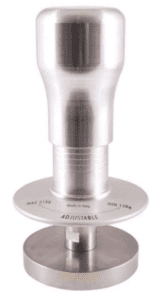

Check Price - Shop Coffee
My Observations
This is an adjustable tamper that allows you to choose a tamping pressure of between 15 – 21Kg.
I wouldn’t personally want to tamp to over 15Kg, however some do, there are some pro baristas out there who prefer to tamp at a higher pressure.
With this Aluminium tamper, you can play around with it and see which pressure seems to work best – if you can’t tell any difference, I’d say save your wrists and put it on the lowest pressure setting.
Check Price - Amazon UK![]()
![]()
My Observations
Quite a nice looking shaped tamper, and quite heavyweight at 260g.
The brand name Omgogo sounds like some long-extinct colourful and interesting looking feathered yet flightless bird.
The firm who sell this are called Ombobo, which steeps me giggle, due to the reality that the G and B are, obviously, above each other on the keyboard, and I can’t help but think that either the brand name or the company name is a typo! ;-).
The Perfect 57mm Tampers
Compatible with:
Lelit Anna
Lelit Anita
![]()
Check Price - Amazon UK
My Observations
Not a wonderful deal to say about this in reality, a fairly fundamental looking tamper with a wooden handle and stainless steel base. I’m not sure if the weight is correct, it says 399g which would make it particularly heavy weight!
Extremely happy to see from the product details that the capacity is 1ml…?? 😉
You discover, part of my job – back when I had one and I couldn’t basically sit around and write about coffee all day – was writing product descriptions. I’m sure I would have brewed the odd typo, but sometimes I do scratch my head at the sort of stuff I read in product descriptions.
![]()
![]()
Check Price - Amazon UK
My Observations
This is a Lelit tamper, Aluminium deal with with stainless steel base, and really specifically 57.35mm, to perfectly fit the Lelit 57mm baskets for the Lelit Anna & Lelit Kate.
It’s apparently only 20g of being half a Kilo, flipping Nora! That’s what you call a heavyweight tamper.
I’m not sure it’s correct, a lot of the weight will be in the base with it being an Aluminium deal with, as Alu is lightweight. So if you buy one, please weight it and let me know. Ta 🙂
![]()
![]()
![]()
Check Price - Amazon UK
My Observations
Another Lelit tamper, and this one is all stainless steel, yet at 250g apparently lighter than the one above which has an Aluminium handle, which amplifies my suspicions that this tamper does not have an auto shut off… 😉
The Perfect 58mm Tampers
Compatible with most other espresso machines, including:
Gaggia Classic
Rancilio Silvia
Rancilio Silvia Pro
Sage Dual Boiler
Nuova Simonelli Oscar, Oscar II, Musica
All other Lelit Machines other than Anna & Anita
All Profitec espresso coffee machines
All ECM espresso coffee machines
All Rocket espresso coffee machines
All Bezzera espresso machines
All La Marzocco espresso coffee machines
All Expobar espresso machines
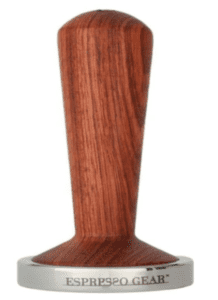

Check Price - Shop Coffee
My Observations
I have to say, I do like the unusual look of this tamper from Espresso coffee Gear.
Yes, I’m sad, we’ve already ascertained that – however there’s rather a big difference between this tamper and the majority of others, which is that the rosewood deal with flares out.
So this is what your finger and thumb will generally come into contact with when tamping, instead of the metal base, which I hazard a guess would be rather a nice comfortable tamp.
![]()
Check Price - Amazon UK
My Observations
These tampers from Motta are extremely much what I’d class as a standard tamper.
They’re the really normal tamper shape, with a wooden deal with & a stainless steel base. As you’ll see shortly, Motta do explore the slightly unusual when it comes to tamper shapes.
This one, nevertheless, is about as usual as you can get for a tamper.
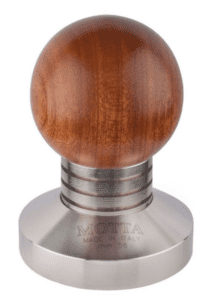

Check Price - Shop Coffee
My Observations
Now then, this is among a few Motta tampers you’re bound to find here, given that Motta are one of the leading brands of barista accessories, nevertheless this one has a entirely different handle shape than most tampers I’ve seen.
The handle, as you can see, is ball-shaped. Why they’ve called it “bubble shaped” I’m unsure, the first thing that springs to my mind when I think of a solid round object is a ball, not a bubble.
Maybe Motta are anxious that if they call it a “Ball Tamper” rather than a “Bubble Tamper”, some members of the public will take this literally, misunderstanding what it is you’re supposed to be squishing with this thing, which is, of course, ground coffee beans.
Anyway, it looks cool, and given that I am already beginning to build up a little bit of a tamper collection, I might truly have to get myself one of these.
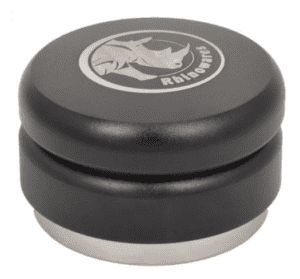

Check Price - Shop Coffee
My Observations
This is a flat push tamper, named so due to the truth that of the fact that it’s flat, and you push it ;-).
It’s literally a palm tamper, so instead of having a tamper which callsfor you to grip a deal with and press down, you can push down with the palm of your hand, or I suppose any part of your anatomy offering you’re careful to keep it level.
Your elbow, maybe – or perhaps even your chin if you’re that way inclined, even though I think the majority of people would probably opt to use the palm of their hand.
![]()
Check Price - Amazon UK
My Observations
This is the 58mm version of the Diguo Elegance tamper I pointed out earlier, with its adjustable height deal with which is done by adding or removing the metal washer. Rather a nice looking tamper I think, and looks very good for the money.
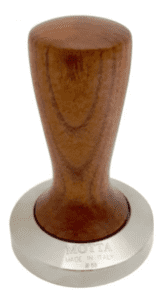

Check Price - Shop Coffee
My Observations
Another tamper from the well known coffee gear brand Motta, nevertheless this one has a mildly different shaped deal with, maybe one to try if you haven’t got on with more fundamental handle shapes.
This is another great deal from Shop Coffee, as this is a simply well known brand, who produce some decent stuff, and this tamper is cheaper than some of the other non-branded (or branded with unknown brand names) tampers.
EDO Barista Tamper Baby Pink – 58mm


Check Price - Shop Coffee
My Observations
Another pro 58mm tamper from shop coffee, and I’m including this one in particular because, well, you don’t see lots of baby pink coffee tampers!
Having said that, in addition to the colour, it looks like a decent tamper too, with Aluminium deal with and stainless steel flat 58mm base, and it’s available in a range of other colours if you’re not a big fan of baby pink. Click here to see the other colours.
OK so that’s my advice on tampers, and as you can see there are loads & loads to choose from – and in truth, you can’t go wrong, as long as you’re selecting the right tamper for your portafilter.
Well, I suppose you can buy a tamper that you’re not all that blown away by, in terms of comfort. For example, you might find that the kind of handle doesn’t rather suit you.
Maybe you have massive sausage fingers and need a tamper handle the size of a rolling pin, or maybe you have slightly more dainty hands?
We’re all different, and thankfully there are numerous different forms of tampers to choose from, and they’re one of the the majority of low-cost part of the necessary home barista kit, so if you do need to replace your tamper further down the line, it’s not a huge deal.
If you’re looking for bigger jumps in your home espresso game, even though, once you’ve got yourself a better tamper, the next thing I’d consider is the grinder situation.
While tamping is important, grinding is arguably THE key to espresso coffee quality, second only to the coffee itself I’d say.
If you’re currently utilizing pre-ground coffee, freshly grinding your own coffee beans will be a step in the right direction.
If you’re already grinding your own, but you’re utilizing a grinder that belongs in the same chocolate teapot category as the plastic scoop tamper, improving your mill is often the perfect way to enhance effects.
For more on this see:
Best Burr Coffee Grinders
As I’ve basically pointed out, another surprisingly underrated (and obvious, you’d think, however it seems not) way to enhance your espresso quality is to enhance on the quality of the coffee you’re using.
It’s an amazing in reality how numerous people don’t get this. If you put rubbish in, you’ll get rubbish out.
You can have the best coffee mill and the perfect coffee brewing device nevertheless unless you’re using fantastic coffee, you won’t get perfect espresso coffee.
If you didn’t learn, as well as coffeeblog, I run The Coffeeworks, supplying wonderful quality coffee beans, in my humble and OK, biased, opinion.
Yes, I’m going to say my coffee is an amazing, nevertheless if you knew more about the technique that goes into choosing these coffees, you’d possibly better understand where I’m coming from when I say this.
The Coffeeworks began as a project involving coffee bloggers (coffee blog readers – so that now includes you), in which I ran a series of polls to find out what readers were looking for.
The majority of this included what flavour profiles people were looking for, as I didn’t want to only end up with a range of coffees that I love, I need customers to love them too.
However all of the major decisions were crafted with reader’s opinions in mind, including seemingly unimportant decisions like which pouches to go for, and delivery options.
And with all of the coffees including the new increased range, I spent the majority of time tasting lots of different coffees via various brewing methods, as well as cupping. I know, it’s a tough job, however someone has to do it ;-).
So when I say this is fantastic coffee, I’m not basically saying that as a business person who wants you to buy his products.
If you’ve not tried my coffee before, below is a discount code that offers you a quarter off any of my coffee beans:
Use discount code CBNC25 for 25% off your first order at Coffeeworks
And once you’ve used the code above, by the way, as a returning customer (which, thankfully many customers are, as this truly is ideal coffee!) use the discount code: coffeebotherers for 10% off all of your future orders.
Another really often overlooked yet hugely important part of espresso-making, is distribution.
I’m not going to correctly get into the discussion of distribution here, because it’s a topic for another entirely separate post, but I’ll briefly introduce you to distribution just in case it’s something you’ve not yet come across.
Distribution implies exactly what it sounds like it indicates, the even distribution of the coffee in the basket. There are obviously masses of particles of ground coffee beans in a portafilter basket, very I’ve counted them and there are approximately… haha, you didn’t fall for that did you? ;-).
I’ve not counted them… Even though, I did count how most coffee beans there are in the basic espresso coffee basket, and in an 18g dose there’s usually approximately 120-150 coffee beans, depending on the varietal, roast profile and so on.
There’s some entirely useless info for you. You’re welcome :-).
Anyway, these particles can gather in clumps, and this is especially true with certain grinders, even more so with grinders towards the entry degree. Distributing the coffee essentially implies to break up the clumps and more uniformly distributing the ground coffee.
When you see baristas performing various strange-looking rituals, such as knocking the portafilter with the tamper, or their hand, or doing the L for loser sign and rotating their thumb and forefinger over the coffee like some deranged individual trying to mock the coffee he or she has simply dosed into their portafilter… these are all manual distribution methods.
The perfect distribution method in my simple opinion, and among the many popular over the past few years, is called the WDT, or the Weiss Distribution Process.
This started out as a recipe involving a pointy implement, like a needle, and stirring up the grounds in the basket, in concentric circles.
Loads of people have developed the technique and crafted it their own, and the majority of people these days work with some form of multi-pronged pointy implement, and these are primarily known as “WDT tools”.
There are likewise leveler tools, which I believe started out with the OCD leveler, and now there are lots of similar devices to this, but I think it’s important to point out that these kinds of tools don’t rather do the same as WDT.
These tools work on the surface only, and they do nothing with distribution, though they’re often sold as “distribution tools” or “coffee distributors”, they level the surface, so they’re levelers.
If you want to utilize a leveler, no problem – nevertheless I’d work with one as well as a WDT tool, not instead of, as they do a different job.
Remember, you could also brush your hair with your toothbrush, however you probably wouldn’t? Each to their own! ;-).
Some of the Best WDT Tools
I’m only including a few WDT tools here, as there are so several hitting the market at the moment, and lots of of them are extremely similar. Watch this space, as I’ll create a separate review article for WDT tools in the future and link to it from here.
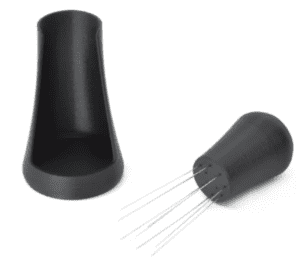

Check Price - Etsy
My Observations
I make no apologies for the fact that I’m obsessed with coffee ;-), I’m sure you’d expect nothing else from someone who truly brews his living from writing & talking about it all day! So, as you can probably imagine, I have lots of coffee tools & accessories, including WDT tools.
There are a couple of ways I think you can go with WDT – single equipment or two tools.
There’s the deeper part of the WDT recipe which means distributing all the way down to the extremely bottom of the basket, and then there’s what’s known as surface raking, where you handle the surface specifically. So you can use one specific equipment for each, or one equipment for both.
Some people believe that you should utilize a slightly thicker pronged WDT tool (around 0.4mm generally) for the deeper WDT, but then for the surface, a thinner equipment should be used, around 0.2-0.25mm.
To be perfectly honest, I don’t understand whether using one mildly thicker device for the deeper WDT and then a thinner pronged equipment for the surface steeps any difference to likelihood of channeling (which is the main thing we’re trying to combat with WDT).
It could, in theory, and I know some folk think that it does make a difference – I’ve not literally been able to tell if it does or not, and I’ve not done enough specific scientific research study into this as yet to tell you whether utilizing two tools is better than one.
What I do believe but is that any WDT is better than none, for reducing the chances of channeling, and that while a two tooled approach might not truly be any better than one, I don’t believe it can do any harm.
In theory you could utilize a thinner pronged tool for both, but I find the thinner needles are a little bit too flimsy for deeper WDT, they end up bending, and when they do this I think you potentially end up messing up the higher areas with the bending prongs while distributing the deeper areas. I may be wrong.
You could likewise use one device for the deeper WDT, and then an OCD type leveler for the surface.
Personally, I either use the one tooled WDT approach, or the two tooled approach, depending on where I am and how much time I have – nevertheless my favourite device for both the two tooled and the one tooled approach is this one.
There are various other similar tools with similar needle size, but this one seems nice and sturdy, it comes with a stand which I find handy, you can change the needle setup (if you want to) and the number of needles/pins used.
Re the stand, the version above comes with a stand, but if you prefer you can buy the version which sticks onto the side of your espresso machine:
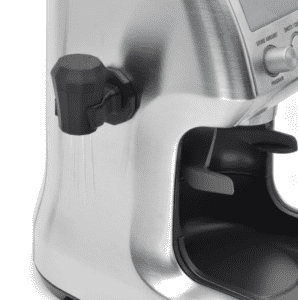

Check Price - Etsy
Check Price - Etsy
My Observations
This is the WDT equipment I usually utilize in conjunction with the above if I’m utilizing a two-tooled approach.
I’ve tried other thinner tools, including one that I paid about fifty quid for, and this is my favourite one of the ones I’ve tried.
It’s sturdy, none of the needles have fallen out (unlike with the fifty quid one!), and it has a magnetic hanging loop which allows me to stick it on the side of my Sage dual boiler, which is really handy.
This includes custom engraving (the imagery above is very an example) which makes this a nice gift idea for coffee aficionados, and for more of these see:
Perfect Gift Ideas for Coffee Lovers
The Perfect Coffee Tampers – Conclusion
I understand, I’ve covered rather a bit more than purely coffee tampers in this post – but I’ve done this basically because lots of people know they need a proper tamper to improve their espresso, but don’t realize that there other very simple ways that you can likewise up your espresso coffee game.
Creating one of the improvements above, using better coffee, improving your coffee mill or utilizing a better tamper will help you to improve your results, but creating all of these changes will produce exponential results, leading you on the path to espresso heaven!
It’s fair to say that improving your espresso machine is another component to this, nevertheless I’m holding back on that advice in the article actually due to the truth that I think most people who’re looking for the best coffee tamper, will be people who’ve basically simply bought an espresso machine.
To a certain extent, regardless of what your espresso coffee machine is, you could always upgrade it, and becoming a home barista often comes with the pandemic condition mentioned as upgradeitis.
So quite than to annoy the heck out of you by suggesting that though you may have simply bought an espresso coffee machine, you need to upgrade it already.
What I’d recommend, is that you focus the upgradeitis on the areas of the majority of significant return for the smallest investment, which would be the coffee, the coffee grinder & the tamper.
If you are already at the point of upgrading your espresso coffee machine, though, see:
Best Home Barista Espresso Machines
Before I sign off, basically to deal with a few extensively asked questions:
How hard must you tamp coffee?
You’ll have probably heard the “30 pounds of pressure” thing – and this, in my simple opinion, is about as realistic as Dragons, Unicorns & the “£350 million a week to the NHS” bus ad.
I’m sure it came with good intentions, however I just don’t think it’s particularly beneficial – or true.
You can buy a calibrated tamper if you like, which will click when you’ve hit the pre-set pressure, which in some cases is 30 pounds, or with the adjustable pressure tamper above you can select from a couple of different pressures. Otherwise, even though, I’d just ignore any reference to pounds or KG of pressure, and just push the tamper until you feel the coffee stops moving.
The a lot of important things about tamping, are a level surface, and consistency. So just tamping in a way that you’re able to do consistently whenever, simply applying pressure until you can tell that the tamper has stopped compressing the grounds, while ensuring that the tamper is completely extent, is fine.
The reason it’s important to get a extent surface is that an uneven surface can promote channeling, which is what takes place when water under pressure finds paths of least resistance through the coffee, leading to uneven extraction and therefore poor tasting espresso coffee, or at least poorer than it would have tasted if it hadn’t have channeled.
What sort of coffee tamper is best?
This is completely down to the individual. I personally prefer handled tampers to flat tampers, and I prefer heavier weight bases with wooden handles. I’m not a big fan of the all-metal tampers, as I simply find wood is a bit nicer to hold than metal, but each to their own.
One thing I would say, is that I truly don’t like plastic tampers – and that there ought to be a rule against brands calling a scoop with a flat bottom, a tamper. The majority of domestic espresso machines come with these flat bottomed scoops which supposedly double as tampers, and these are about as helpful as something in truth not all that helpful.
I in fact like Sage Sage coffee machines and one of the fantastic things about them, apart from the fact that they’re usually truly clever machines and punch way above their weight in terms of value for money, is that they usually come with proper tampers.
The latest machine from them, even though, the Bambino – the base degree of the Bambino Plus, comes with a plastic tamper!
It’s like a toy version of their usual metal tamper, which I think is a shame, however apparently was essential in order to achieve the desired lower RRP.
Nevertheless anyway – if you buy the Bambino or any espresso coffee machine which comes with a plastic tamper, I’d highly suggest buying a proper tamper (and you’ll need a 53mm tamper for the Bambino).
The Gaggia Classic Pro comes with a plastic tamper too, you’ll need a 58mm tamper for that – even though the limited edition (they’re literally releasing 3000 of them, all numbered) while available, come with a barista kit including a proper wooden-handled tamper.
For more on this (including details on the limited edition run) see:
Gaggia Classic Pro Review
Are all coffee tampers the same size?
No, tampers vary in size to reflect the size of the portafilter that comes with your coffee makeking tool, which is why I’ve categorized the tampers above into the a lot of common sizes.
It’s worth keeping in mind too, that while in the majority of cases, the tamper is the same size as the portafilter, this isn’t always the case.
Some baskets are slightly tapered or have a ridge in them, which implies that you need a mildly smaller tamper, which is why for example the tampers for Sage portafilters are usually 53mm and not 54mm.
If you’re in doubt, simply have a quick google for “best tamper size for <insert your espresso coffee machine here>”, and you’ll usually find others have already answered this issue on forums, Reddit & so on.
Is a bigger portafilter better?
Not literally. There’s lots of argument about portafilter size and shape, and while some assume that the larger 58mm portafilter size is better because this is what many professional machines utilize, this isn’t necessarily because it’s the perfect, it’s more about standardization.
The E61 espresso group was released in the early 60s, and has a 58mm group, it became very popular, so when other people were developing other groups for other espresso machines, 58mm probably just crafted sense to stick with this size as a fundamental, which is why most (not all) professional espresso machines tend to have 58mm baskets.
How do you choose a coffee tamper?
As I said earlier, the tamper is among the cheapest home barista device, so I wouldn’t stress too much about it – simply pick one that you like the look of, that has some good reviews, and if you don’t like it for whatever the reason, then wonderful – something to drop hints to friends and family about in the run up to Christmas or Birthdays ;-).
Life is like a box of chocolates, so join my Brew Time list, subscribe to my YouTube Channel, become an accredited coffee botherer (Patreon supporter), try my coffee at The Coffeeworks (use discount code coffeebotherers), follow me on Twitter & Instagram, follow the coffeeblog FaceBook page, and that’s all I have to say about that.
This article to start with appeared at Coffee Blog – The UK Specialty Coffee Blog – For Lovers of REAL Coffee!














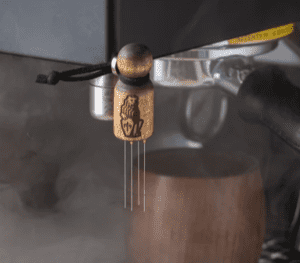
You must be logged in to post a comment.